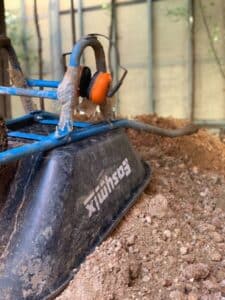Concrete slabs are a vital component of many buildings and structures. They provide a sturdy and level surface for structures to rest on. However, a structure’s foundation will require underpinning, particularly when it needs reinforcing.
In this post, we will explore everything you need to know about concrete slabs, including their function, thickness, and strength, and the factors that influence their durability.
What is the Function of a Concrete Slab?
The main function of a concrete slab is to act as a foundation for buildings and other structures such as patios, driveways, and sidewalks. Concrete slabs are commonly used in areas with poor soil conditions to provide a stable surface for structures to rest on.
A concrete slab can also create a level surface on sloped terrain, making it ideal for outdoor living areas or pools.
Thickness and Strength of Concrete Slabs
The thickness and strength of a concrete slab will vary depending on several factors, including the size and weight of the structure it is supporting, the soil conditions in the area, and the climate. It is essential to ensure that the concrete slab is thick and strong enough to support the weight of the structure without cracking or settling.
Thickness
The thickness of a concrete slab is typically determined based on the load it will be supporting. A concrete slab supporting a single-story residential home will be thinner than one supporting a high-rise building. The thickness of a slab can range from 4 inches to over 12 inches, depending on the load it will bear.

Strength
The strength of a concrete slab is measured in pounds per square inch (psi). The minimum strength of a concrete slab should be 3,000 psi, but it can be higher depending on the structure it will support. A concrete slab that will support heavy equipment or machinery may require a higher psi to prevent cracking and settling.
What Are the Factors That Influence Concrete Slab Durability?
These are the factors that influence slab durability:
Ground Preparation
The preparation of the ground is crucial to ensure the stability of the concrete slab. The area where the concrete slab will be poured should be cleared of any vegetation, debris, or loose soil. The ground should then be compacted to create a solid base for the slab. If the soil conditions are poor, additional measures may be necessary, such as installing a sub-base or adding drainage.

Reinforcement
Reinforcement is necessary to prevent cracking and increase the durability of a concrete slab. It can be achieved by adding steel or fibre to the concrete mix. Steel reinforcement is commonly used in large-scale projects. In contrast, fibre reinforcement is often applied in smaller projects, such as patios or driveways.
Curing
Curing is the process of allowing the concrete to dry and harden. Proper curing is essential to prevent cracking and increase the durability of the concrete slab. Curing can be achieved by covering the concrete with a curing compound or by keeping it moist for several days. The curing process should be carefully monitored to ensure that the concrete dries evenly and does not crack.
Would you like to learn about underpinning for renovations? Check out our blog about it today.
